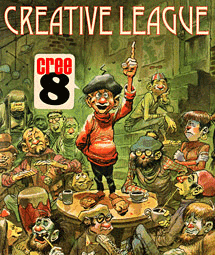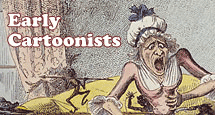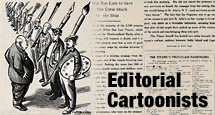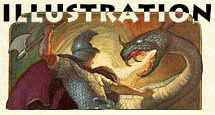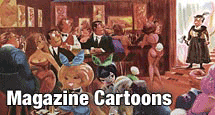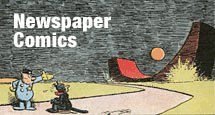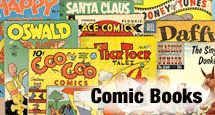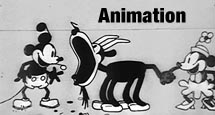This posting is a stub. You can contribute to this entry by providing information through the comments link at the bottom of this post. Please organize your information following the main category headers below….
Birth/Death
Birth: August 29, 1890 Winnipeg, Manitoba
Death: 7 August 1966 Vancouver, Britsih Columbia
Occupation/Title
Character Designer / Illustrator / Political Cartoonist
Bio Summary
Charlie Thorson led a colorful life of unprecedented accomplishments, working at times on Leon Schlesinger’s Looney Tunes and Merrie Melodies, to working on Walt Disney’s first feature-length film, Snow White. He is most notable achievement is probably being the designer of the characters Bugs Bunny and Elmer Fudd. He moved around quite a bit, never making a name at any of the many animation studios he was a part of. He was 45 before he got into animation, having been employed as a graphic artist in Winnipeg, Canada for most of his early life.
Early Life/Family
Charlie Thorson was born in 1890 and began doing oddjobs around Winnipeg, adding to the time he spent among his high-living artist circle of friends. His parents, Stefan Thordarson and Sigridur Thorarinsdottir, were Icelandic immigrants who arrived in Canada in 1887. After establishing themselves, which included changing their last name to Thorson and converting to Presbyterians, they had four sons, the third of which being Charlie. Charlie led a rebellious childhood, full of befriending wild animals, claiming to see the world through their eyes, and he just loved to draw. He traveled a lot as a teenager, getting whatever work he could.
Education/Training
Not much is stated about Charlie’s education and training, giving merit to the notion that he did what a lot of famous artists did and learned as they went, drawing their way there the whole time. His training inevitably was almost all on-the-job, as he lived life as a hobo, jumping from position to position to make ends meet in the looming Great Depression era.
Career Outline
1935: Hired by Disney Studios, worked on Snow White (was left out of the credits due to leaving before the film was finished)?1939: Began work on Gulliver’s Travels?-Moved to Harman-Ising, MGM, and then Warner Bros.?Designed hundreds of characters: including Bugs Bunny, Elmer Fudd, and Twinkle Toes?1947: Wrote and Illustrated Keeko?1952: Wrote and iluustrated Chee-Chee and Keeko
Comments On Style
Thorson’s work is precise, but gentle. His politcal cartoons were accurate, but generous. Most famously known for designing Bugs Bunny, his character design was valued as being highly appealing, and he was very successful in his concepts. His characters were generally charmingly cute, and his rendering gave them a unique “human-ness” that viewers could connect with.
Influences
While working on Snow White, he told friends that his design of the heroine was based on an old girlfriend he had had in his teen years. Little Hiawatha was modeled after his niece, Ellen. Often he would sketch children out as animals they requested. Thorson used many figures from his life as inspiration for characters he designed.
Personality
Thorson’s personality is reflected in his artwork, high-spirited and joking. He was never mean-spirited in his cartoons, but he was honest.
Anecdotes
The most famous, the creation of Bugs Bunny. Charlie was asked to design a new rabbit character. Thorson doodled up a standard model sheet of six separate poses and left them on Bugs Hardaway’s desk, waiting for approval. Written on the very bottom of this sheet, was “Bug’s Bunny.” After review, the name seemed to have stuck!
Miscellaneous
Filmography
Snow White and the Seven Dwarfs?Gulliver’s Travels
Honors
?In 1947 he was made an honorary member of the International Mark Twain Society for “his contributions to literature.”
Related Links
Bibliographic References
http://www.awn.com/mag/issue2.6/2.6pages/2.6walzthorson.htmlhttp://www.thecanadianencyclopedia.com/index.cfm?PgNm=TCE&Params=A1ARTA0012112 ?http://www.themuralsofwinnipeg.com/Mpages/index.php?action=gotomural?ralid=218 ?
BIO-AAA-550
Contributors To This Listing
Jorge Garrido
Dana Pull
To make additions or corrections to this listing, please click on COMMENTS below…??????





